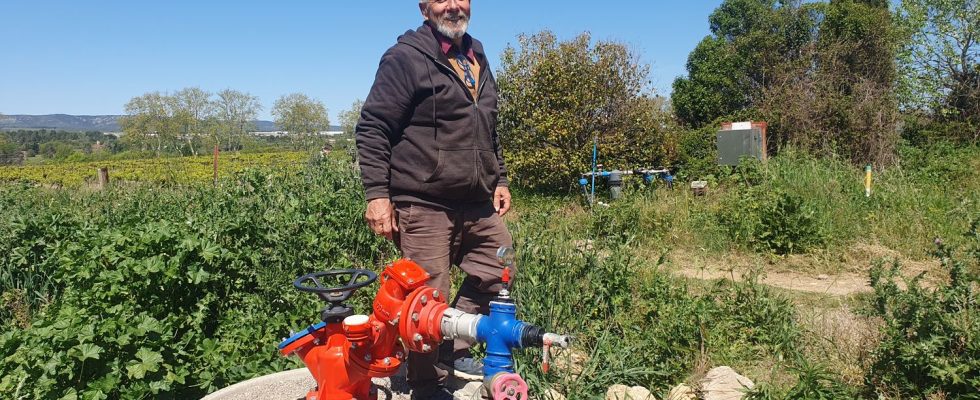This network already draws water from the Rhône to supply the departments of Gard and Hérault in particular. The Occitanie region is launching studies to assess the relevance of the extension into the Pyrénées-Orientales.

Published
Update
Reading time: 5 min

This is one of the solutions proposed by the Occitanie region to counter drought: pumping water from the Rhône to supply irrigation networks with more than 200 kilometers crossing three departments, up to the Pyrénées-Orientales. The idea would be to make it like an aqueduct. It sounds a little crazy but it already exists and it’s called Aqua Domitia.
This hydraulic network, named in Latin, is a nod to the Romans. It is not an aqueduct but a set of canals and pipes which pump water from the Rhône to transport it to Gard, Hérault then Aude. This system came into full service two years ago and everything is based on the pumping station near Montpellier.

“The purpose of this pumping station is to take the water from the terminal part of the canal, explains Jean-François Blanchet, general manager of BRL, the network concessionaire. Like a blood system with a heart, the station will pressurize this water and diffuse it towards a pipe system to reach as far as Gruissan. In all, there are 140 kilometers of pipes that wind along the coastline to supply drinking water to more than a million people.
Preserve other watercourses
For its supporters, by tapping into a fast-flowing river, Aqua Domitia saves suffering waterways. “Rhône water avoids taking 8 million cubic meters from rivers, as was the case previously, notably in the aquifer of the Hérault river, in the Astian water table, which is very close to the Mediterranean, which is a heritage tablecloth to be preserved, or in the water of the Canal du Midi” develops Jean-François Blanchet.
“There is also a very environmental scope in this project. Today, we no longer question its necessity but rather why it was not scaled more significantly.”
Jean-François Blanchet, general director of BRLat franceinfo
This is precisely the idea of the Occitanie region by extending this network a little further to the Pyrénées-Orientales. Studies have just been launched to assess the relevance and feasibility of such a project. This resource is obviously also valuable for farmers. Almost 9 000 Farms are now connected to Aqua Domitia. Among them, that of Michel Pontier, near Montpellier. We find him in the middle of his fields perched on a large tap. “To open, I turn a large valve which is a little harddescribes the farmer. We hear water starting to come out and go into the pipes. It’s Rhône water and I guarantee you that when it arrived here, it was happiness.”
A victory for this former elected representative to the Chamber of Agriculture. He was one of the first to campaign for the pipes to reach his rapeseed, corn and sunflower fields. “What you have to keep in mind is that here, if there was no more water, it would be the desert, there would be nothing leftaffirms Michel Pontier. When I moved in it was raining 750 mm and there we are between 400 to 450. Without the water from Aqua Domitia there would have been no recovery. My younger partner, I’m not sure he would have had the credits. As much as seed establishments look to see if the water is secure, bankers look to see if, in the project, there is a secure resource.”

But this obviously raises questions about water sharing. Moreover, there are 20 years ago, Aqua Domitia’s initial project was to go from the Rhône to Barcelona in Spain. At the time, French farmers mobilized against it. Impossible for them to imagine a French river irrigating the lands of their competitors. Today, this is no longer relevant.
“The Rhône is not an inexhaustible environment”
But the water battle is still there because everyone wants their share of the Rhône. “There is still enough water”explains Nicolas Chantepy, director general of the Rhône-Mediterranean-Corsica Water Agency, an organization which carried out a study on the future of the river. “The Rhône, even if it is the most powerful river in France, is not an inexhaustible environment. Overall, according to climate models and the study we have carried out, the flow of the Rhône will remain equivalent on average. There may be more water in winter and, on the other hand, less water in summer because there will be fewer glaciers which will bring water during the periods of July-August.”
We must therefore remain cautious. For France Nature Environnement and its president in the region Simon Popy, we must pay attention to preconceived ideas about the water cycle, “this message, this mantra which is repeated by agricultural unions, that water which goes to the sea is lost. It may be lost for agriculture, but water is also essential to the Mediterranean ecosystem. “
“If tomorrow there is no more fresh water reaching the Mediterranean, we will find ourselves with an increase in salinity. So we will very quickly have dramatic consequences for the Mediterranean ecosystem. There will be consequences economic behind.”
Simon Popy, president of France nature environment Occitanieat franceinfo
The Occitanie region recognizes that Aqua Domitia will not resolve the issue of drought in the Pyrénées-Orientales. But the extension of the network is part of its strategy for adapting to climate change.
